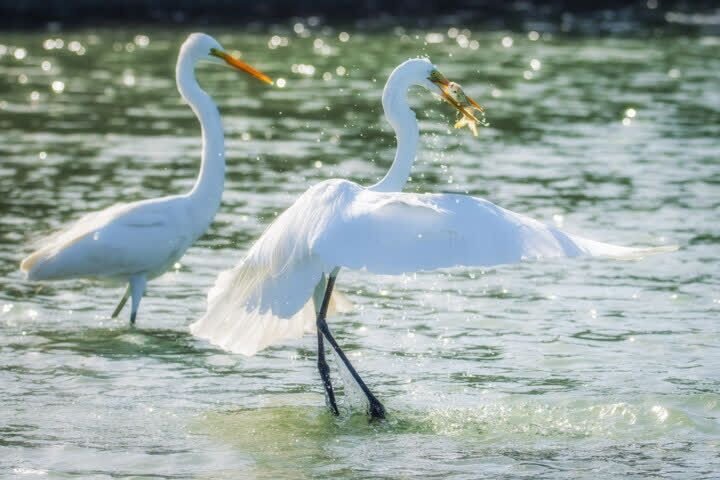Baram Alwan registered as Iran’s 26th wetland on Ramsar Convention

TEHRAN –Baram Alwan wetland, located in the southwestern province of Kohgiluyeh-Boyerahmad, and surrounded by the Zagros mountains, has recently been inscribed on the Ramsar List.
It is the 26th wetland in Iran designated as a wetland of international importance, IRNA reported.
The wetland with an area of about 14 hectares is located near the gypsum hills, and its depth varies from 12 to 30 meters.
Having stunning natural scenery and plant and animal diversity, the wetland is considered one of the tourist attractions of the province.
Baram Alwan wetland is home to migratory birds from distant regions such as Siberia. The wetland’s surrounding area is covered with rare plants such as reeds, nettle, hawthorn, and manna shrubs.
The rich vegetation of Baram Alwan wetland has provided a suitable habitat for all kinds of animals. Phytoplanktons are the main food of fish and other aquatic animals of the wetland and carp is the dominant fish species in this wetland.
The wetland plays an important role in preserving the biodiversity of the region.
The inclusion of Baram Alwan in the list of Wetlands of International Importance was announced on Friday on the occasion of World Wetlands Day which is celebrated every year on February 2. This year World Wetlands Day was celebrated in Mazandaran province, Ramsar city.
The Day aims to raise global awareness about the vital role of wetlands for people and the planet. The theme of World Wetlands Day 2024 was Wetlands and human wellbeing.
Importance of wetlands
Wetlands are ecosystems saturated with water, either seasonally or permanently. They store water and ensure its quality, providing resilience against drought. They play a central role in sustainable development by supplying all our fresh water.
Wetlands play a major role in protecting the land against floods and the impacts of storms. They provide food and diverse habitats that support genetic, species, and ecosystem biodiversity. Wetlands play a key role in the life cycles of many species and annual migration patterns.
Unfortunately, wetlands are being degraded and lost due to pollution, overexploitation, climate change, and human population growth. In recognition of these challenges, the RAMSAR Convention, an international treaty, was adopted in 1971.
Ramsar Wetlands are sites inscribed on the List of Wetlands of International Importance (the "Ramsar List") under the Convention on Wetlands.
The Convention on Wetlands is an intergovernmental treaty that provides the framework for the conservation and wise use of wetlands and their resources.
In Iran, 141 wetlands with ecological value with an area of over 3 million hectares have been identified, of which 25 wetlands are designated as wetlands of international importance (registered in the Ramsar Convention) covering more than 1.4 million hectares and four sites are biosphere reserves.
Some 43 percent of the country’s wetlands have the potential to become a source of sand and dust storms (SDSs), Sediqeh Modarres, an official with the DOE, stated.
Wetland Cities Accreditation Scheme
The Wetland City Accreditation Scheme is an important opportunity for cities and local governments to integrate wetland conservation and sustainable management with sustainable development and delivery of vital services.
Amid rising pressure to tackle the climate, pollution, and biodiversity crises together, urban wetlands offer valuable nature-based solutions for healthier, prosperous, and sustainable societies.
The Convention was adopted in the Iranian northern city of Ramsar in 1971 and came into force in 1975.
MT/MG
Leave a Comment